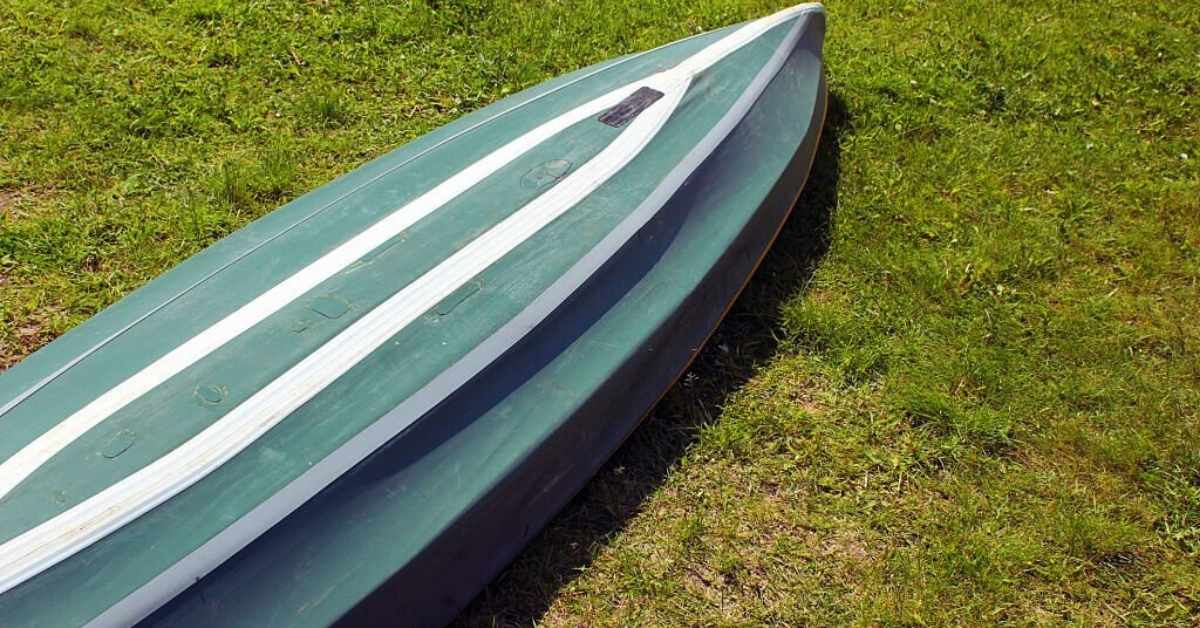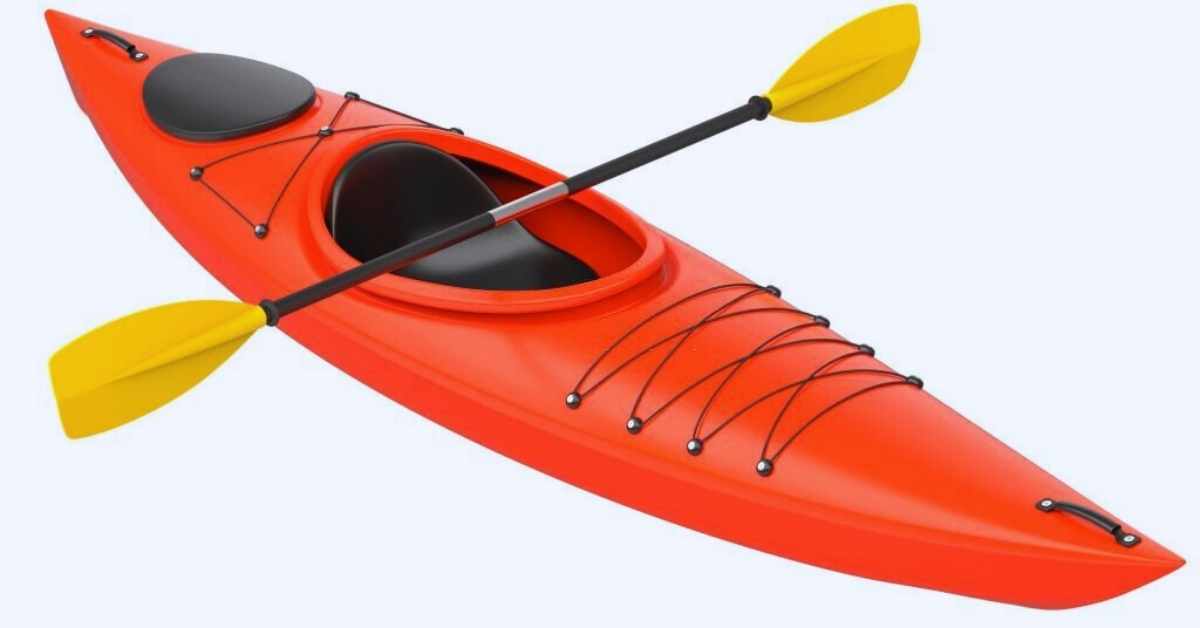Kayaking is a popular water sport that involves navigating through the water in a small boat called a kayak. While kayaks can vary in size and shape, they all share similar basic Parts Of A Kayak.
The bow refers to the front of the kayak, while the stern is located at the back. The cockpit is where the paddler sits, and footrests provide support for their feet. The hull represents the bottom of the kayak, while the deck encompasses its top surface.
To propel the kayak forward, a paddle is used. It’s important to have an understanding of these different parts to ensure safe and enjoyable kayaking experiences.
Table of Contents
Hull: The Foundation of Your Kayak
The hull is a crucial part of a kayak, as it serves as the base on which the entire vessel is built. It’s responsible for providing stability and maneuverability by coming into contact with the water.
Depending on the intended use of the kayak, the shape of its hull can vary. Some hulls are designed to prioritize speed, while others focus on stability.

Common types of hulls include flat, rounded, and V-shaped variations. To ensure durability, kayaks typically feature hulls made from materials like plastic, fiberglass, or carbon fiber.
When choosing a kayak for specific activities, considering the type of hull is essential.
Flat Hull
The flat hull is a critical component of a kayak, which is a small watercraft used for recreational or sporting purposes.
It refers to the bottom part of the kayak that comes in contact with the water and plays a crucial role in providing stability and maneuverability.
Typically constructed from durable materials like plastic, fiberglass, or carbon fiber, the flat hull is designed to withstand various water conditions, including calm lakes, fast-moving rivers, and choppy seas. Its design ensures that kayakers can navigate safely and enjoyably.
V-shaped Hull
The hull of a kayak, which is a small watercraft used for recreation or sport, plays a crucial role in its design.
Serving as the bottom part that interacts with water, the V-shaped hull is a defining feature. It boasts a pointed front and wider back, enhancing stability and maneuverability.
This unique design enables the kayak to glide smoothly through rough waters and maintain a steady course.
As a result, paddlers have greater control over the direction of the craft while enjoying their adventures on the water.
Cockpit: Your Command Center on the Water
When you’re out on the water in a kayak, the cockpit becomes your command center. It’s where you sit and take control of the kayak’s movements. The cockpit has different parts that all play a role in making your experience comfortable and safe.
You have the seat, which provides support and cushioning for those long paddling sessions. There are also footrests and thigh braces that help maintain good posture and stability while you paddle.

And let’s not forget about the cockpit rim – it acts as a barrier to keep water from getting inside the kayak. Knowing how each component of the cockpit works is crucial for a smooth and enjoyable kayaking adventure
Seat
The cockpit seat is the central command station for kayakers during their time on the water. It’s an essential element of the kayak, designed to provide comfort and stability to ensure optimal control and maneuverability.
Properly adjusting the seat to fit your body is crucial as an ill-fitting seat can lead to discomfort and even potential injury.
Additionally, it’s important for the seat to be constructed with durable materials that can withstand regular use without wearing out. Considering all these factors, selecting a well-designed seat is vital in enhancing your overall kayaking experience.
Footrests
The footrests play a crucial role in a kayak’s design. Positioned within the cockpit, they provide stability and allow the paddler to have better control over the vessel.
Meanwhile, the cockpit acts as the central command center for the kayaker, facilitating precise navigation with ease.
The footrests and cockpit are integral components of a kayak that require meticulous attention to detail to ensure optimal safety and functionality. Together, they create a seamless and effective system that enhances the overall experience of kayaking on water.
Thigh Braces
The thigh braces serve as a command center for kayakers, providing balance and control while paddling.
Made of durable materials like plastic or foam, these braces fit snugly against the thighs. Proper placement is crucial for comfort and optimal performance.
As a vital component of any kayak, high-quality thigh braces ensure a safe and enjoyable paddling experience. Choosing compatible braces that match the kayak’s design and intended use is imperative.
Paddle: Your Propulsion Tool
The paddle is an essential part of a kayak, functioning as the primary tool for propelling the boat. It is composed of two blades, a shaft, and a grip.

The blades are typically made from lightweight materials like fiberglass or carbon fiber. They are designed to efficiently move through water when dipped and pulled back. The shaft connects the blades to the grip and is usually made of aluminum or carbon fiber.
The grip is ergonomically designed to provide comfort and a secure hold for the paddler. Proper use of the paddle is essential for effective and enjoyable kayaking, enhancing the overall experience on the water.
Blade Shape
The shape of the blade plays a vital role in the functioning of a kayak paddle, which serves as the primary tool for propulsion. The efficiency and effectiveness of each stroke depend on the design of the blade.
An expertly crafted blade shape ensures better water displacement, resulting in more powerful strokes. On the other hand, an inadequate blade shape can lead to less efficient strokes and increased fatigue for kayakers.
Therefore, it is crucial to carefully consider the blade shape when choosing a paddle for kayaking. By making the right selection, you can enhance your kayaking experience and improve performance on the water.
Shaft Material
The shaft material is a crucial component of the paddle, which is responsible for propelling a kayak.
The material used in the shaft construction plays a significant role in determining the performance and durability of the paddle.
It’s important to choose a lightweight yet sturdy material that ensures optimal efficiency and longevity.
When selecting the right shaft material, it’s essential to consider factors such as intended use and environmental conditions.
In conclusion, the shaft material holds great importance in creating an efficient and durable paddle for kayaking purposes.
Deck: Covering and Storage
The deck is the upper part of a kayak that covers the hull. It serves to prevent splashes and keep water from entering the kayak. Additionally, some kayaks offer storage options on their decks.
Hatch Covers
Hatch covers play a vital role in kayaks, acting as protective barriers for the storage compartments. They are designed to keep water out and protect the contents inside.
Typically made from durable materials like rubber or neoprene, hatch covers are secured to the kayak using straps or clips.
It is essential to properly maintain and replace hatch covers when needed to ensure the kayak’s safety and longevity. In conclusion, hatch covers are an important part of a kayak’s design and functionality.
Bungee Cords
Kayaks are equipped with bungee cords, which are elastic cords designed to secure items on the kayak.
Made of rubber or latex, these cords can stretch and contract as needed. They serve the purpose of securing paddles, water bottles, and other small items while kayaking.
Bungee cords play a vital role in providing a safe and convenient storage solution for items during water activities. To maintain their effectiveness and durability, it is important to use and maintain bungee cords properly.
Conclusion
In this detailed guide, we have examined the different elements that comprise a kayak, including the hull and deck.
Each part has a vital role in influencing the performance, stability, and overall experience of the kayak.
Whether you are new to kayaking or a seasoned paddler, having knowledge about the anatomy of a kayak will enrich your pleasure and ensure your safety while on the water.
